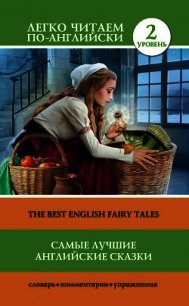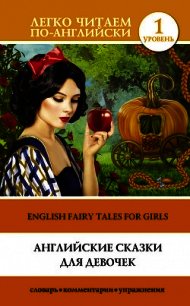English Fairy Tales - Jacobs Joseph (бесплатная регистрация книга .txt) 📗
XXV. TOM THUMB.
Source.–From the chap-book contained in Halliwell, p. 199, and Mr. Hartland’s English Folk and Fairy Tales. I have omitted much of the second part.
Parallels.–Halliwell has also a version entirely in verse. "Tom Thumb” is “Le petit Poucet” of the French, “Daumling” of the Germans, and similar diminutive heroes elsewhere (cf. Deulin, Contes de ma Mere l’Oye, 326), but of his adventures only that in the cow’s stomach (cf. Cosquin, ii. 190) is common with his French and German cousins. M. Gaston Paris has a monograph on “Tom Thumb.”
XXVI. MR. FOX.
Source.–Contributed by Blakeway to Malone’s Variorum Shakespeare, to illustrate Benedick’s remark in Much Ado about Nothing (I. i. 146): “Like the old tale, my Lord, ’It is not so, nor ’twas not so, but, indeed, God forbid it should be so;’” which clearly refers to the tale of Mr. Fox. “The Forbidden Chamber” has been studied by Mr. Hartland, Folk-Lore Journal, iii. 193, seq.
Parallels.–Halliwell, p. 166, gives a similar tale of “An Oxford Student,” whose sweetheart saw him digging her grave. “Mr. Fox" is clearly a variant of the theme of “The Robber Bridegroom” (Grimm, No. 40, Mrs. Hunt’s translation, i. 389, 395; and Cosquin, i. 180-1).
XXVII. LAZY JACK.
Source.–Halliwell, 157.
Parallels.–The same story occurs in Lowland Scotch as “Jock and his Mother,” Chambers, l.c., 101; in Ireland, as “I’ll be wiser next time,” Kennedy, l.c., 39-42. Abroad it is Grimm’s Hans im Gluck (No. 83). The “cure by laughing” incident is "common form” in folk-tales (cf. Kohler on Gonzenbach, Sizil. Marchen, ii. 210, 224; Jones and Kropf, Magyar Tales, 312).
XXVIII. JOHNNY-CAKE.
Source.–American Journal of Folk-Lore, ii. 60.
Parallels.–Another variant is given in the same Journal, p. 277, where reference is also made to a version “The Gingerbread Boy,” in St. Nicholas, May 1875. Chambers gives two versions of the same story, under the title “The Wee Bunnock,” the first of which is one of the most dramatic and humorous of folk-tales. Unfortunately, the Scotticisms are so frequent as to render the droll practically untranslatable. “The Fate of Mr. Jack Sparrow” in Uncle Remus is similar to that of Johnny-Cake.
XXIX. EARL MAR’S DAUGHTER.
Source.–From the ballad of the same name as given in Mr. Allingham’s Ballad Book: it is clearly a fairy tale and not a ballad proper.
Parallels.–The lover visiting his spouse in guise of a bird, is a frequent motif in folk-tales.
XXX. MR. MIACCA.
Source.–From memory of Mrs. B. Abrahams, who heard it from her mother some x years ago (more than 40). I have transposed the two incidents, as in her version Tommy Grimes was a clever carver and carried about with him a carven leg. This seemed to me to exceed the limits of vraisemblance even for a folk-tale.
Parallels.–Getting out of an ogre’s clutches by playing on the simplicity of his wife, occurs in “Molly Whuppie” (No. xxii.), and its similars. In the Grimms’ “Hansel and Grethel,” Hansel pokes out a stick instead of his finger that the witch may not think him fat enough for the table.
Remarks.–Mr. Miacca seems to have played the double role of a domestic Providence. He not alone punished bad boys, as here, but also rewarded the good, by leaving them gifts on appropriate occasions like Santa Claus or Father Christmas, who, as is well known, only leave things for good children. Mrs. Abrahams remembers one occasion well when she nearly caught sight of Mr. Miacca, just after he had left her a gift; she saw his shadow in the shape of a bright light passing down the garden.
XXXI. DICK WHITTINGTON.
Source.–I have cobbled this up out of three chap-book versions; (1) that contained in Mr. Hartland’s English Folk- tales; (2) that edited by Mr. H. B. Wheatley for the Villon Society; (3) that appended to Messrs. Besant and Rice’s monograph.
Parallels.–Whittington’s cat has made the fortune of his master in all parts of the Old World, as Mr. W. A. Clouston, among others, has shown, Popular Tales and Fictions, ii. 65-78 (cf. Kohler on Gonzenbach, ii. 251).
Remarks.–If Bow Bells had pealed in the exact and accurate nineteenth century, they doubtless would have chimed
Turn again, Whittington,
Thrice and a half Lord Mayor of London.
For besides his three mayoralties of 1397, 1406, and 1419, he served as Lord Mayor in place of Adam Bamme, deceased, in the latter half of the mayoralty of 1396. It will be noticed that the chap-book puts the introduction of potatoes rather far back.
XXXII. THE STRANGE VISITOR
Source.–From Chambers, l.c., 64, much Anglicised. I have retained “Aih-late-wee-moul,” though I candidly confess I have not the slightest idea what it means; judging other children by myself, I do not think that makes the response less effective. The prosaic-minded may substitute “Up-late-and-little-food.”
Parallels.–The man made by instalments, occurs in the Grimms’ No. 4, and something like it in an English folk-tale, The Golden Ball, ap. Henderson, l.c., p. 333.
XXXIII. THE LAIDLY WORM.
Source.–From an eighteenth-century ballad of the Rev. Mr. Lamb of Norham, as given in Prof. Child’s Ballads; with a few touches and verses from the more ancient version “Kempion.” A florid prose version appeared in Monthly Chronicle of North Country Lore for May 1890. I have made the obvious emendation of
O quit your sword, unbend your bow
for
O quit your sword, and bend your bow.
Parallels.–The ballad of “Kempe Owein” is a more general version which “The Laidly Worm” has localised near Bamborough. We learn from this that the original hero was Kempe or Champion Owain, the Welsh hero who flourished in the ninth century. Childe Wynd therefore = Childe Owein. The “Deliverance Kiss” has been studied by Prof. Child, l.c., i. 207. A noteworthy example occurs in Boiardo’s Orlando Inamorato, cc. xxv., xxvi.
Remarks.–It is perhaps unnecessary to give the equations "Laidly Worm = Loathly Worm = Loathsome Dragon,” and “borrowed = changed.”
XXXIV. CAT AND MOUSE.
Source.–Halliwell, p. 154.
Parallels.–Scarcely more than a variant of the “Old Woman and her Pig” (No. iv.), which see. It is curious that a very similar “run" is added by Bengali women at the end of every folk-tale they tell (Lal Behari Day, Folk Tales of Bengal, Pref. ad fin.)


